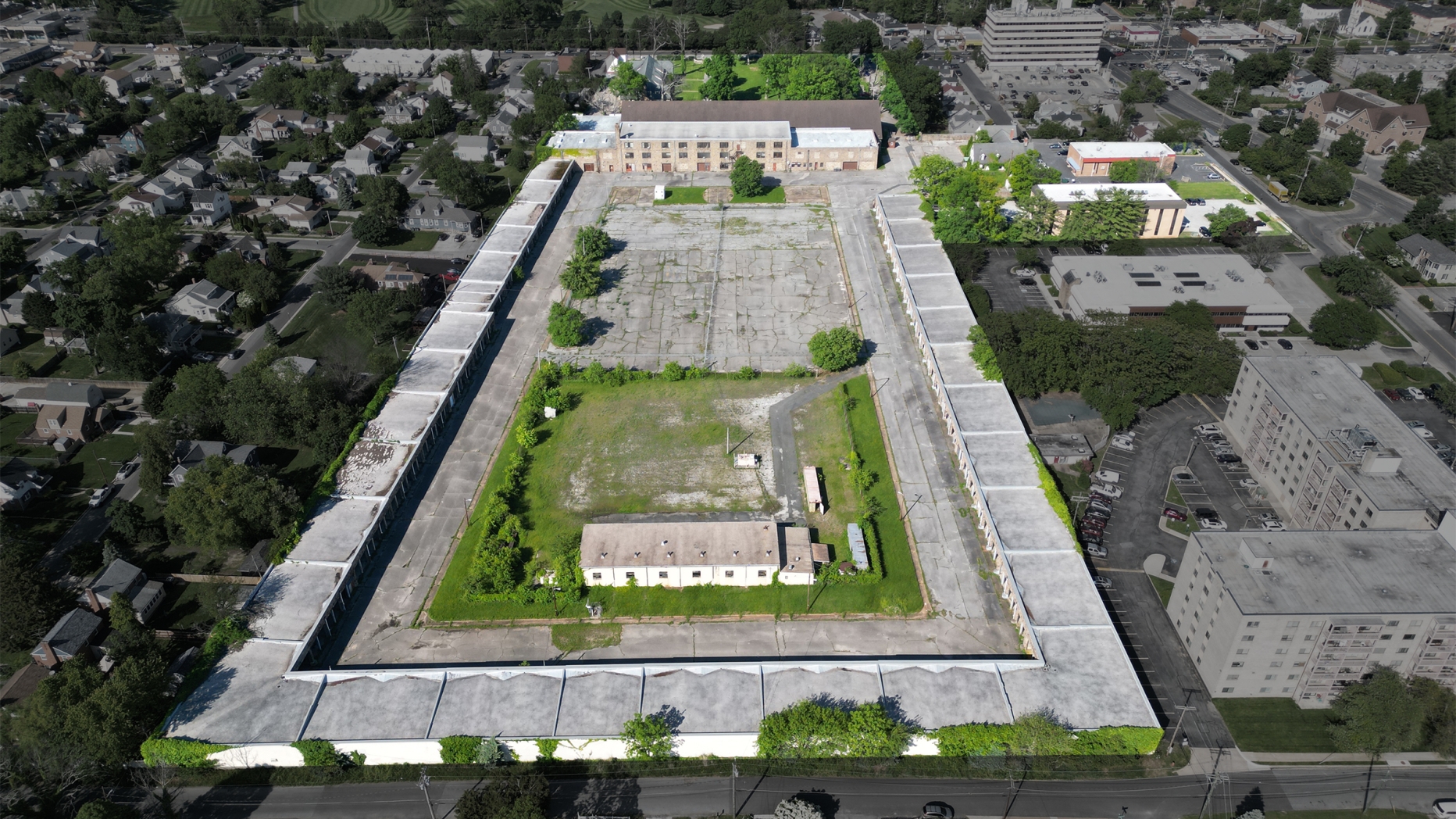Zhijie Wang | Unknown Studio Landscape Architecture & Urban Design
Baltimore, MD

Aerial photo of the Pikesville Armory showing the current condition of the site, Image Source: Unknown Studio.
Stuart Weitzman School of Design
102 Meyerson Hall
210 South 34th Street
Philadelphia, PA 19104

Aerial photo of the Pikesville Armory showing the current condition of the site, Image Source: Unknown Studio.
This summer, I worked as a Landscape Architect Intern at Unknown Studio in Baltimore, Maryland. I engaged in various projects, each showcasing different landscape types. This includes a historic site reutilization in the Pikesville Armory. It was strongly connected to my studies in historic preservation. The Pikesville Armory, with a history of weapons and military training, was added to the National Register of Historic Places in 1985. The current project envisions transforming the site into a dynamic space for youth learning and competition as well as public use. My role involved iterative planning to strike a balance between new development and historic preservation. One of the key challenges was to incorporate historic elements and values into the design, including preserving the existing buildings, as well as proposing a new symbol of the site’s history. The preservation and adaptive reuse of the historic garages is one of the main tasks of the design. The garages border the site on three sides and were originally used for military vehicles. Our team explored various possibilities for adaptive reuse, including converting these structures into studios and outdoor classrooms. We also proposed modern seatings and bleachers in the garages for people to watch the matches.
We also considered using the quincunx pattern—a military formation—for tree planting as a symbolic nod to the site’s history. Grading and water management also required careful consideration due to the varying elevations of up to 10 feet across the garages. Our design needed to respect and integrate these existing structures. This project directly connected with the principles I studied in the Historic Preservation department, particularly the idea that preservation is not merely about maintaining buildings in their original state but about proposing adaptive uses. Through this internship, I deepened my understanding of designing for historic sites, often weighing the potential for preservation and adaptive reuse. Additionally, I gained valuable experience working with clients to develop a shared vision for the site. I also honed my problem-solving skills by addressing complex site constraints, such as integrating modern utilities with historic structures. This experience reinforced the importance of creativity and adaptability in landscape architecture. I am grateful to have this internship and the opportunity to contribute to such a multidisciplinary project and to collaborate closely with historic structures.